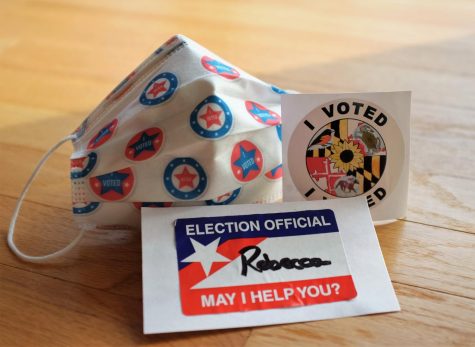Not Quite Old Enough to Vote, I Worked the Polls Instead

When my alarm went off at 5 a.m. on that Saturday morning, I began to question my life choices. “How important is it really for you to do this?” my warm, comfortable bed asked. The freezing bedroom answered with a decisive “not very.” Still, I dragged myself out of bed, knowing that this was, in fact, very important.
I was born on Nov. 12, 2002. I will turn 18 on Thursday — nine days after voting ends in the 2020 general election. Anyone who knows me will tell you that I’ve been complaining for years about the fact that I can’t yet vote, which brings us back to 5 a.m.
Working as an election judge gave me the opportunity to get involved in the process, despite my age. I had studied extra all week to give me Saturday, Sunday and Tuesday — Election Day — off. I had stocked up on snacks to keep me fed from 6 a.m. until 9 p.m. (I had begged my friends to bring me food).
The night before, I felt ready.
The morning of, not so much.
I was working at the scanning machines. Still blinking the sleep out of my eyes, I couldn’t help wondering who I was, as a 17-years-and-356-days-old teen, to be responsible for this vital part of the election process. But I soon realized that I wasn’t responsible alone.
Each election site has two chief judges — one is a Democrat, and one is a Republican. The remaining 33 judges (everyone from the person who greets you at the front door to the person who checks you in to the person who scans your ballot) are a mixture of the parties and extensively trained.
Still, when the first voter walked up to my machine, I was grateful for the mask hiding the nervousness on my face. I made sure not to touch his ballot when I took his voter authority card and stared at the ceiling as he inserted his ballot into the machine — following every rule in the inch-and-a-half thick judges’ manual.
During elections, everything is done meticulously to the point of near-absurdity. The blank ballots are counted in the morning and then again in the evening. Those numbers are matched with the number of voters for each ballot type (there are over a hundred) and the number of votes on the scanning machine. The votes on the scanning machines are matched with the number of voter authority cards, the numbers at the check-in desk, the number of provisional voters and the number of ballots issued. All these numbers are checked periodically throughout the day by multiple people with different political affiliations. I was just one person in a painstaking electoral process.
“Ah, this is where the ballots get shredded,” a man said. He grinned like it was both funny and original — neither of which was true. Throughout the three days I worked the polls, countless people joked about ballots being trashed, claimed voter fraud and expressed a general distrust in the whole process.
I read the news a lot, and there’s a lot of discussion regarding voter fraud. However, having been a part of the process, I have a lot of confidence in the system’s ability to be fair, nonpartisan and accurate. Anyone who participates in the 15-hour marathon that is working as an election judge in Maryland would probably tell you the same thing.
Working the polls isn’t easy, and at 9 p.m., 15 hours after I arrived that Saturday, I saw the result of our labors. Four tiny receipt-like slips of paper with tiny numbers representing a tiny portion of the decision about the next members of the Board of Education, House of Representatives members, judges and, of course, the president.
The next day I got another result — this time an email from the Department of Health telling me I’d been exposed to COVID-19 while working as an election judge. Was it really worth it to get out of my warm bed, work for 15-hours straight, being exposed to COVID-19 and having a stick shoved up my nose for a paycheck of just $195?
Honestly? No.
However, it wasn’t about the money.
It was about the pride on the faces of the elderly couple who’d just become citizens and were voting for the first time. It was about the girl who turned 18 on Nov. 2, the man who had never missed an election in his life, and the mother voting with her four young children.
It was about the man who asked me where the ballots were shredded.
It was about learning to trust the election process by seeing firsthand just how meticulous it is.
Originally published in the Baltimore Sun on 11/11/2020
Your donation will support the student journalists of Wilde Lake High School. Your contribution will allow us to purchase equipment and cover our annual website hosting costs.





